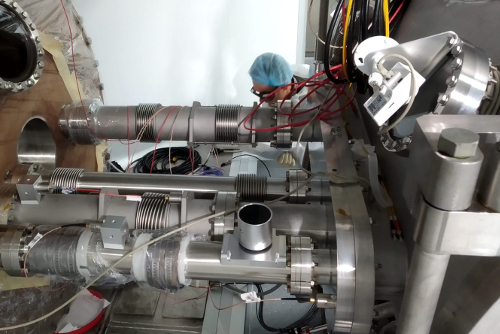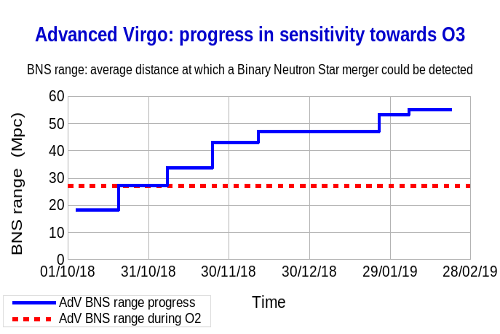Gravitational Waves: astrophysics, source modeling, data analysis, construction of the Virgo detector
The LIGO Scientific Collaboration and the Virgo Collaboration (the LVC) have agreed to suspend their third observation period, named O3, which has been running since the 1st of April, 2019. The suspension, which will be effective within one week, is motivated by the worldwide COVID-19 pandemic. Public health and worker safety are always the top priority for the LVC.
Read more
On April the 25th, 2019, the network of gravitational-wave (GW) detectors formed by the European Advanced Virgo, in Italy, and the two Advanced LIGO, in the US, detected a signal, named GW190425. This is the second observation of a gravitational-wave signal consistent with the merger of a binary-neutron-star system after GW170817. GW190425 was detected at 08:18:05 UTC; about 40 minutes later the LIGO Scientific Collaboration and the Virgo Collaboration sent an alert to trigger follow-up telescope observations.
Advanced Virgo and the two Advanced LIGO detectors resume the taking of science data on the 1st of November, 2019, following a one-month-long stop. This event marks the restart of the third observation period, named O3, which started on the 1st of April, 2019. All three of the interferometers in the global gravitational-wave observatory paused O3 on the 1st October, 2019, in order to work on improvements to enhance the performance of the detectors.
The world’s three principal gravitational-wave detectors - LIGO in the US, VIRGO in Italy, and now KAGRA in Japan - have today, the 4th of October, 2019, signed a memorandum of agreement (MoA) that covers scientific collaboration. The agreement includes the joint observation of gravitational waves and the sharing of data over the coming years, while it also foresees the expansion of the collaboration through the welcoming of new partners in the future.
Today March 4th, 2019 the Advanced LIGO and Advanced Virgo detectors are starting their 14th Engineering Run. ER14 will last at least four weeks: it will be the final test before the start of the 3rd LIGO-Virgo Observation Run (O3). During the first half of the run activities will be scheduled that might still improve the three interferometres in the network. ER14 will allow scientists to perform long-term tests of the detector stability, as well as to check the readiness of the software that analyses data in real time.
The LIGO and Virgo Collaborations present new results from searches for coalescing cosmic objects. The LIGO and/or Virgo interferometers have now confidently detected gravitational waves from a total of 10 stellar-mass binary black hole mergers and one merger of neutron stars, which are the dense, spherical remains of stellar explosions. Seven of these events had been reported before, while four of the black hole detections are newly announced.
From September 12, 2015, to January 19, 2016, during the first LIGO observing run since undergoing upgrades in a program called Advanced LIGO, gravitational waves from three binary black hole mergers were detected.






